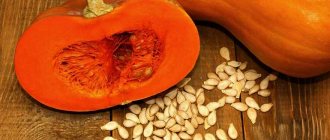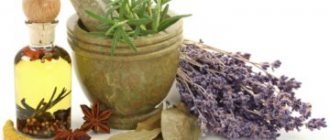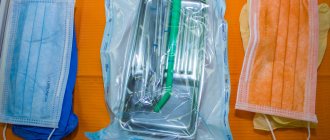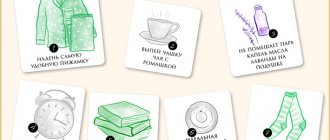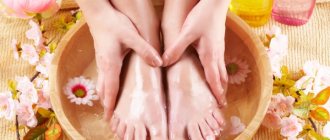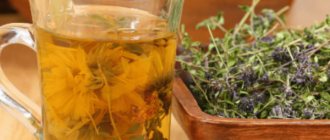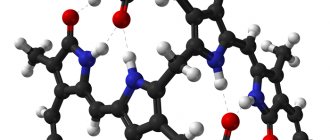Some information about the pancreas
The pancreas is the largest gland found in the human body.
It has an elongated shape and its appearance resembles a snail without a shell. And if we talk about where the pancreas is located, it should be noted that it covers several internal organs at once. Its body (main part) is located behind the posterior wall of the stomach, the tail is adjacent to the duodenum, and the head is located near the spleen. This arrangement often causes confusion when pain occurs, since people often confuse pain that occurs in the pancreas with pain in the stomach or spleen. And in order to promptly identify problems with this organ and begin its treatment as quickly as possible, you need to know exactly how the pancreas hurts and what measures need to be taken first.
With pancreatic disease, the pain syndrome can be different - acute and dull, pulling and cramping. It all depends on the disease developing in it. For example, with pancreatitis or pancreatic necrosis, the painful sensations are often acute and cramping in nature. They arise, as a rule, in the left hypochondrium, since it is the tail part of the gland that becomes inflamed most often. But if the head of the pancreas is inflamed, pain appears in the right hypochondrium.
In this case, the painful syndrome often spreads to other parts of the body, for example, the cervical spine, shoulder blades, lower back, shoulders and peritoneum. If, when it occurs, the patient is given an injection using an antispasmodic drug, the pain will become less pronounced, but will not completely disappear. If an attack occurs, it goes away completely only after a few days.
In acute inflammation of the pancreas, the pain can be girdling and spread to various parts of the body
In addition to pain, when a person has inflammation of the pancreas, other symptoms may appear:
- nausea;
- vomit;
- diarrhea;
- increased fat content in feces;
- pallor of the skin (with simultaneous inflammation of the gallbladder, obstructive jaundice occurs);
- weakness.
Important! If the attack is acute and accompanied by vomiting and diarrhea, you must immediately call a team of doctors to your home. Only emergency medical care will help eliminate these digestive system disorders and prevent the onset of dehydration.
If the disease is chronic and only periodically makes itself felt with aching pain in the left or right hypochondrium, nausea and aversion to fatty foods, then treatment can be carried out at home, using various medicinal herbs. But remember that treatment of the pancreas with herbs can only be carried out with the permission of the attending physician!
The benefits of medicinal herbs for the pancreas
Before talking about which herbs to treat the pancreas, it is necessary to say a few words about their benefits. The most effective are herbal infusions that contain several medicinal herbs and combine their therapeutic effects.
For inflammation of the pancreas, treatment is recommended with plants that have the following properties:
- stop inflammatory processes,
- activate tissue regeneration (restoration),
- improve the outflow of pancreatic juice,
- normalize metabolism,
- reduce pain,
- improve intestinal motility,
- normalize the flow of bile from the gallbladder to the pancreas,
- strengthen the walls of blood vessels and improve blood circulation of the gland.
The use of herbs for the treatment of pancreas must be agreed with a doctor
These are not all the medicinal effects that herbs have. But in order to get the maximum benefit from their use, healers do not recommend using pharmaceutical preparations. It is better to collect the grass yourself, drying it and grinding it at home. But if this is not possible, then you can use herbs purchased at the pharmacy.
Important! You should not collect herbs along the roads, as they are saturated with exhaust gases and contain many harmful substances for the body. It is best to collect herbs in swampy areas or forests located away from roads and highways.
Another important point is that in order for the symptoms of pancreatic disease to become less pronounced or disappear altogether, treatment should include not only taking herbal decoctions or infusions, but also a diet. This is a mandatory condition, since without it even modern drug therapy loses its effectiveness.
The diet does not imply complete fasting (it is required only during an exacerbation of the disease), but only the rejection of “harmful” foods and drinks, which include:
- all fatty and fried foods,
- carbonated and alcoholic drinks,
- smoked meats,
- pickles,
- rich pastries.
Diet is a key point in the treatment of the pancreas; without it, no therapy will produce positive results.
Inflammation of the pancreas in children
Pathologies in this organ began to appear quite often in children. If the pediatrician does not indicate any restrictions, then traditional medicine offers recipes for “little” people.
Herbal remedies are good for pancreatic problems.
Herbal mixture for treatment - recipe No. 1:
- Mix in equal proportions the flowers of eyebright, calendula, immortelle, barberry leaves and string grass.
- Before use, the entire composition is thoroughly ground in a coffee grinder.
- 1 tbsp. herbal mixture is poured with a glass of boiling water.
- Leave for about 12 hours. It is advisable to do this in the evening so that the collection is ready in the morning.
Drink 1/3 glass before meals 3 times a day. For those over 10 years old, increase the dose to ¾ cup.
Recipe No. 2:
- 2 tbsp. Japanese sophora flowers pour 0.5 liters of boiling water.
- Leave for 12 hours.
The dosage is the same as in the first recipe.
Rolled oats porridge is considered very useful. It is useful for a young body, copes well with pancreatic problems and does no harm at all.
For these purposes, the porridge is prepared exclusively liquid and with water. It should not contain any additives in the form of salt or sugar.
Eat oatmeal porridge in small portions (a few spoons are enough) throughout the week.
Even ordinary yogurt is used as a treatment and a positive effect on the pancreas in children. It is not used internally, but as a compress. The technique is as follows:
- Dip a small linen cloth, about the size of your palm, generously in preheated yogurt.
- The material is placed on the area of the affected organ and the stomach is also captured.
- For the compress you will also need cellophane and a warm scarf, which is placed over linen fabric.
You need to make a compress at night. The course of treatment is 4 weeks, then you can rest a little and resume the procedures again.
At the time of therapy, it is natural to follow a mandatory diet. Sugar and sweets are replaced with a natural product - honey.
An additional effect can be obtained by diluting the diet with pumpkin porridge. For 4 weeks it is cooked for dinner and given to the child.
It is advisable to prepare fresh every day. Honey will be added as an addition so that children do not feel disgust.
Always at hand: parsley for pancreatitis
Parsley
Another life-saving herb is common parsley. It has properties that help activate the functions of the pancreas. Such products also include lemongrass, zamanika, ginseng, pink radiola and leuzea. But parsley is the most accessible ingredient.
Recipe:
- Grind three hundred grams of green parsley sprigs in a blender
- add the same amount of garlic
- take a kilogram of lemons, removing the seeds, and chop them together with the peel
- place the ingredients in a dry, and most importantly, non-metallic container
- seal the mixture tightly
- leave in a dark and cool (but not cold!) place for 14 days
- the infusion is consumed three to four times a day, a teaspoon, shortly before meals
Important: the result will appear only if you strictly follow the recipe for the infusion. We recommend that before choosing the type of infusion, you consult with your doctor, who will help you choose the correct recipe for your case.
Parsley is the most accessible ingredient, and by mixing it with lemons and garlic, you can get an effective cure for chronic pancreatitis.
What herbs help get rid of reactive pancreatitis
Reactive pancreatitis is a response of the pancreas to concomitant diseases of the digestive system. To treat this condition, certain types of herbs are used. The main purpose of using recipes is to restore the digestion process, eliminate pain and improve the functions of the pancreas.
Herbal decoction
Herbal preparations based on St. John's wort, mint and motherwort leaves are highly effective in the treatment of reactive pancreatitis. The ingredients must be combined in equal proportions (50 g each). You should take half a glass of the decoction daily on an empty stomach. The duration of the course is a maximum of two weeks. Repeated treatment can be carried out after a week's break.
Cooking nuances:
- the workpiece is poured with boiling water (500 ml);
- the infusion process lasts twenty minutes;
- the infusion must be brought back to a hot state over low heat;
- after removing from the heat, cover the container with a lid and cover with a towel;
- The product is ready for use in fifteen minutes.
Widely known antioxidant properties make green tea an indispensable drink for pancreatitis.
Collection for a six-month course of treatment
Effective folk remedies for the treatment of reactive pancreatitis include a collection based on violet, valerian, elecampane and fennel. An important nuance is compliance with the proportions of the ingredients. The decoction is consumed within two weeks. If the symptoms of the inflammatory process persist, then re-therapy can be carried out after a week. A decoction is prepared from one tablespoon of the mixture and 200 ml of boiling water. You need to take the product several times a day, 50 ml.
Ingredient proportions:
- valerian root (90 g);
- violet inflorescences (30 g);
- fennel seeds (30 g);
- elecampane root (60 g).
Red elderberry for pancreatitis
The benefits of red elderberry in treatment are due to the plant’s property of increasing blood circulation in the digestive organs. The inflorescences contain a large amount of natural esters. Red elderberry restores regenerative processes and normalizes the acidity of gastric juice. Additionally, the plant has a detrimental effect on pathogenic microorganisms and improves microflora.
Cooking method:
- Steam 20 g of inflorescences in boiling water;
- the preparation should be infused for twenty minutes;
- The product should be taken in small portions throughout the day;
- The therapeutic course should not exceed ten days (repeated courses after a week's break are acceptable).
What herbs will help with pancreatic diseases
Herbs relieve pain during exacerbations, eliminate swelling of the organ and significantly reduce inflammation.
Complete recovery of the pancreas may not occur earlier than in a year, and it often happens that the acute form of inflammation becomes chronic. Treatment with herbs is possible only when the disease becomes chronic or during remission after an acute form of inflammation.
And now specifically about the plants most often used in traditional medicine recipes and helping in the treatment of inflammation of the pancreas.
Blueberry
Its enveloping property makes it possible to effectively use this plant in dried form in the treatment of diabetes mellitus and with caution in pancreatitis. Blueberry leaves are rich in acids of organic origin, flavonoids, alkaloids, and vitamins C. All this has a good effect on the normalization of organ function.
The restriction is the consumption of fresh blueberries. They contain organic acids that stimulate the synthesis of enzymes that enhance inflammatory processes. In addition, the dietary fiber of the berry provokes bloating and diarrhea; the presence of stones in the gall or bladder is also a contraindication.
Recipes with blueberries for the pancreas:
- Berry decoction. Pour 200 milliliters of boiling water over a tablespoon of dried berries, boil for five to six minutes, strain. Throughout the day you need to drink two to three cups of decoction at room temperature;
- Decoction of blueberry leaves. Pour a tablespoon of dried crushed leaves with six hundred milliliters of boiling water and leave for forty minutes. Drink small portions throughout the day;
- Tea with leaves and berries. Take one dessert spoon of dry berries and leaves, pour into a teapot and pour boiling water over it. Drink without diluting three to four times a day.
Immortelle
Triggers the mechanism of secretory activity of the pancreas. Effective for pancreatitis. The composition contains enzymes that relieve the organ during food processing.
In addition, immortelle reduces acidity and helps reduce pain. The flavonoids included in the composition are effective in the treatment of pancreatitis and, in addition, this herb is a natural antibiotic that reduces bilirubin, which cannot but have a beneficial effect on the pancreas.
But there are also contraindications for using the plant:
- Stagnation in the liver - accumulation of toxic substances contained in the herb occurs with prolonged use;
- Hypertension – increases blood pressure (it is strictly prohibited to use immortelle without a doctor’s permission);
- Increased stomach acidity;
- Allergic reaction and individual intolerance;
- Pregnancy and lactation period.
Recipes with immortelle:
- Decoction. Pour a tablespoon of crushed immortelle with 200 milliliters of boiling water, wait until the mixture boils, and then cook over low heat for half an hour. Strain and take one hundred milliliters three times a day before meals, warm;
- Infusion. Pour four to five grams of crushed immortelle flowers into half a liter of cold boiled water. Leave for eight hours. Drink a glass a day for three weeks.
Chamomile
The effectiveness of its use in pancreatic diseases is explained by its anti-inflammatory and antimicrobial effects. In addition, the essential oils contained in chamomile provoke the production of mucus, which protects the lining of the gland.
Contraindications include:
- Individual intolerance;
- Gallstone disease, a manifestation of diarrhea, also takes into account its choleretic and laxative effects.
Recipes for using chamomile for the pancreas:
- Tea for acute pancreatitis. Pour a cup of boiling water over a dessert spoon of dried flowers, cover with a lid and leave for ten to fifteen minutes. Drink after meals several times throughout the day. You need to start with a quarter cup, then a third, then half. The course is two weeks. With exacerbation of chronic pancreatitis, weak tea is allowed;
- Infusion. Pour a tablespoon of flowers into a thermos and pour a cup of boiling water. Leave for one hour, strain and take a third of a glass warm after meals;
- Decoction. Pour two tablespoons of raw material (without top) into a mug of boiling water and heat in a water bath for ten to fifteen minutes. Remove from heat and after an hour, strain and add boiled water to the resulting infusion to the volume of a glass. Take a third of a glass after meals. The course is two to four weeks. During the acute phase of the disease, make a less strong infusion.
Calendula
Recommended for normalizing bile secretion, treating pathologies of the digestive tract in cases of hepatitis, cholecystitis, gastritis, and ulcers. The substances included in the composition reduce the risk of exacerbation of pancreatitis. Calendula has anti-inflammatory and analgesic effects. The use of calendula is recommended during the period of remission of the disease, but in the acute form its use is undesirable.
Recipes for using calendula:
- Decoction. Pour a cup of boiling water over a tablespoon of raw materials and keep in a water bath for fifteen minutes. After the broth has cooled, strain and bring the volume to a glass, adding boiled water. Take the decoction half an hour before meals, a third of a glass two to three times a day. Take a course of one to two months;
- Infusion. Pour a tablespoon of raw material into a thermos and fill it with a glass of hot water. Leave for one hour. Strain the mixture and drink a quarter glass thirty to forty minutes before meals three times a day. The course is up to two months.
Major diseases
The pancreas is an endocrine organ that produces glycogen, insulin and pancreatic juice. The first is a reserve nutrient for the body. It represents a kind of energy reserve that is used by the body when necessary, for example, during prolonged physical activity. Insulin plays a major role in carbohydrate metabolism, reducing the concentration of glucose in the blood. Pancreatic juice is directly involved in the digestion of proteins, fats and starchy compounds.
A disruption in the production of hormones and enzymes by the pancreas or a functional change in the cells or tissues of an organ becomes the impetus for the development of certain diseases, which include:
- pancreatitis (acute and chronic);
- diabetes;
- cancer;
- ;
- cystic fibrosis;
- pancreatic necrosis.
The most common disease is chronic pancreatitis.
There are many plants that have a beneficial effect on the condition of the pancreas and help normalize its functioning. Herbal treatment can be considered as an effective addition to taking medications prescribed by a doctor and diet. Herbal medicine helps relieve pain during exacerbations of pancreatitis, eliminate swelling of the diseased organ and reduce inflammation.
What can you use to prepare herbal remedies for pancreatitis?
If you become ill, you must follow a special diet, drink decoctions of medicinal plants, and take various enzymes. For the pancreas, immortelle flowers, chicory - its root or the herb itself, medicinal burdock root, dandelion, milk thistle are of great benefit. Healing decoctions, herbs and flowers - infusions - are prepared from the roots. To prepare the decoction, you need to pour a spoonful of chopped roots with water (0.5 liters) and boil for half an hour over low heat, while the container in which the decoction is prepared must be closed with a lid. The medicinal mixture is infused for about one hour. Infusions are prepared in almost the same way, only the preparation time is reduced.
Chronic pancreatitis is treated with mini mixtures prepared from burdock root, medicinal dandelion and chicory. The roots must be chopped in equal proportions before brewing. The crushed raw materials (2 tablespoons of each root) are poured with water (1 liter), boiled over low heat, left for about an hour, filtered and taken orally, half a glass 4 times a day. If the roots are not purchased at a pharmacy, but collected independently, then they can be crushed at home and taken throughout the winter season.
Another effective and useful herbal collection for the disease consists of burdock, dandelion, chicory, which are taken in equal parts (1 tablespoon) and cumin, lemon balm, oregano, which are taken in 1 teaspoon each in equal parts. Dried and crushed herbs are mixed, then a decoction is prepared from 2 tablespoons and a liter of water. The broth should be boiled over low heat for about half an hour, and then infused for about an hour in a container with a closed lid. Take half a glass before meals about 4 times a day.
Meadowsweet and parsley for the treatment of pancreas
You should follow clear instructions when preparing herbal infusions!
A medicinal plant such as meadowsweet relieves the symptoms of the disease very well, primarily this relates to severe pain and inflammation in the pancreas. Meadowsweet is intended for making tea.
To do this, the grass is first crushed and a little warmed water is poured into a glass, then the grass is infused overnight, filtered the next morning and the infusion is drunk up to three times a day, a third of the glass.
In addition, meadowsweet is often combined with other medicinal herbs. For this, calendula, birch and linden leaves, and mullein are used. The prepared collection is poured with boiling water, infused, then filtered and drunk throughout the day.
Teas made from blueberry leaves and some cooking spices, including garlic and onions, bay leaves, and cardamom, have shown high effectiveness in treating pancreatitis. There are also medicinal herbs that activate the functioning of the gland. Among such herbs, ginseng, Chinese lemongrass, zamanika, Leuzea, and Rhodiola rosea are known.
Tinctures are prepared from these herbs, which need to be drunk in medicinal courses, taking short breaks between them.
Almost everyone has garden parsley in their home, and it’s not at all difficult to get it, but not everyone knows that it is an excellent remedy for pancreatitis. For treatment, you need to grind garden parsley (300g), garlic (300g), and lemons (1 kg) using a meat grinder. Lemons are crushed with peel, but after removing the seeds.
All components are placed in a container made of clay, glass or enamel, sealed and kept in a dark, cool place for about two weeks. When the infusion is ready, it should be consumed about three times a day, a teaspoon at a time, a few minutes before meals.
Treatment of the pancreas with medicinal herbs and herbs usually brings the desired result when you strictly adhere to the recipe for their preparation
It is important to clarify that before preparing and consuming medicinal herbal infusions, it is advisable to consult with your doctor, who will be able to suggest herbs that will contribute to the patient’s rapid recovery.
Dandelion decoction for pancreatic health:
//www.youtube.com/embed/ULYMuXXPnKs">
Tell your friends! Share Share Tweet Telegram Class WhatsApp
Traditional medicine recipes and diet
The effectiveness of traditional methods of treating pancreatitis has long been proven. However, therapy may be powerless if you do not adhere to recommendations for observing certain dietary restrictions. Therefore, proper nutrition and diet are mandatory.
- Food must be taken in small quantities, but often - at least 5 times a day.
- Fried, spicy, salty and smoked foods should be completely excluded from the diet.
- Alcohol and smoking are prohibited.
The diet should be rich in cereals and boiled vegetables. It is permissible to consume low-fat varieties of fish and meat. Special attention should be paid to fluids - drink at least 2 liters of clean water.
Acute stage of pancreatitis
An attack of pancreatitis always causes severe pain. At such moments, it is imperative to take painkillers, and then begin to relieve the inflammatory process. The recipes below are perfect for this.
- Grind 300 grams of garlic, 1 kg of lemons, parsley in a blender. Place the resulting pulp in a jar and put it in the refrigerator. Take 15 minutes before. before meals, 1 teaspoon.
- You can prepare an infusion from the leaves of lingonberries, strawberries, corn silks, and bean leaves. Place a tablespoon of the mixture in a thermos and add 200 ml of boiling water. Leave overnight. Take 50 ml 3 times a day for 90 days.
- Another effective remedy: pour immortelle flowers into 0.5 liters of warm water, leave to infuse for 12 hours, then strain. Take 1 glass 3 times a day for 3 weeks.
If during the next attack the pain is not relieved by taking analgesics, and your health does not improve within 24 hours, you should seek medical help.
Chronic inflammation of the pancreas
Chronic pancreatitis must be treated without fail. It does not matter whether the disease bothers you from time to time or not. Therapy is necessary in order to prevent the development of an acute form of pathology.
We should not forget that during the treatment of chronic pancreatitis, it is necessary to take into account concomitant diseases of the gastrointestinal tract, in which the use of certain herbs is unacceptable.
Effective recipes for the treatment of chronic pancreatitis.
- 2 tbsp. spoons of dandelion roots pour 300 ml of boiling water. Leave until completely cool. Take the product 3 times a day, 100 grams before meals.
- Milk decoction is very popular among people suffering from chronic pancreatitis. You will need to prepare peppermint, calamus, thyme in equal proportions (0.5 tablespoons each) and 1 liter of milk. Boil over low heat until 300 grams of milk remains in the pan. Take a tablespoon every hour.
- Mix 2 tablespoons of mint, a tablespoon of calendula flowers, the same amount of toad grass, 1.5 tbsp. spoons of yarrow. Pour the herbal mixture into water and boil for 10-15 minutes. Leave for an hour, take 2 times a day for 30 minutes. before meals.
To support the pancreas
Herbs for the pancreas have a regenerating effect, relieve inflammation, and improve the functioning of the organ. Medicinal infusions can also be used to prevent the development or exacerbation of the disease.
Below are the most effective recipes.
- Pour a teaspoon of dried sophora into a glass of boiling water. Leave for 8 hours, then strain. Drink a quarter glass of infusion before meals. Duration of treatment: 10 days.
- Pour 2 cups of wormwood into a thermos, pour 500 ml of boiling water. Leave for 30 minutes. Take 100 ml before meals.
- You can prepare another effective remedy. Pour a tablespoon of plantain into 250 ml of boiling water. Leave for an hour, then strain. Drink 50 ml infusion before meals.
Effective herbal recipes
For the pancreas, it is important to observe the dosage and regularity of administration. You can easily make a mistake in this regard, so check the properties of all components used in advance and only then prepare herbal tea
Medicinal mixtures from several herbs are, as a rule, more effective than infusions and decoctions from one type of raw material
The most popular are teas made from the following herbs for pancreatitis:
- Immortelle, fennel, yarrow, mint.
- St. John's wort, corn silk, celandine, anise, dandelion.
- Mint, buckthorn, gentian, celandine, watch.
- Tansy, celandine, mint, coltsfoot, yarrow.
- Flax, immortelle, elecampane, nettle, calendula.
- Barberry, hawthorn, strawberry root.
- Calendula, jasmine, birch, oregano, knotweed, valerian.
- Nettle, dill, coriander, dandelion, sage.
- Burdock, tansy, chamomile, rowan.
- Rosehip, alder, fennel, motherwort.
You need to drink such herbal infusions ¼ - 1/2 cup at a time, 2 - 4 times a day.
Take herbal tea in small portions, in some cases reducing the dose to a minimum
Usually tea is taken some time before meals. After 1 - 2 months you need to take a break, and then repeat the dose to maintain the preventive effect. Products with a more pronounced effect should be taken in smaller doses, up to 1 - 2 tbsp. l., until the symptoms of the disease are permanently eliminated.
With regular courses of herbal medicine, not only the condition of the pancreas improves.
The body is cleansed of toxins, blood composition improves, digestion is normalized, vitamin reserves increase, which has a beneficial effect on the immune system. Also, some teas have properties to prevent the occurrence of tumor diseases, including malignant neoplasms.
Effective medicine - medicinal herbs
To recover, sometimes it is enough to put the body in order: monitor nutrition, and cleanse the blood and intestines of toxins and waste.
First stage: diet. Doctors recommend filling your diet with low-fat seafood, fish, buckwheat, oatmeal and rice, vegetables, fruits and herbs, crackers or bran bread. Main restrictions: no alcohol, tea and coffee, soda, fried and fatty foods, baked goods. You should also avoid oils and nuts.
Horsetail
Stage two: medicinal herbs for the pancreas. A classic collection for cleansing the body and stopping inflammatory processes in cells:
- two tablespoons of dried bean pods, crushed
- three spoons of horsetail
- one spoon of herbs (for example, parsley, kryphaea and meadowsweet) crushed
All ingredients are mixed and infused in 500 ml of boiling water for 30 minutes. Using a water bath. Next, filter the infusion through cheesecloth, squeezing out the herbs. Prepare vodka in advance, infused with golden mustache grass for 14 days (17 shoots and 500 mg of vodka). Add it to the infusion. Drink 4 times a day, shortly before meals, no more than 125 g (half a glass). To ensure that the tincture retains its properties, it is stored in a cool, dark place, like a cellar.
Important: The course of treatment is designed for 30 days, during which time the chronic illness disappears, but if symptoms remain, it is not recommended to take the herbal collection for longer.
During periods of exacerbation, take another tincture: iris. It is prepared from the root of the plant, grinding it to a powder. Leave for 24 hours, pour boiling water over it. Take 4-5 times, after filtering the liquid.
Herbal remedies help with pancreatitis, but the effect will only appear if you follow a strict diet without heavy, high-calorie foods and prohibited drinks.
Causes and severe symptoms of inflammation
Inflammation of the pancreas can occur for a number of specific reasons, discussed in detail in the list below:
- Excessive consumption of alcoholic beverages;
- Gallbladder dysfunction;
- Duodenitis, acute gastroduodenitis;
- Genetic predisposition;
- Severe stress, nervous disorders;
- Obesity, endocrine disorders;
- Poor nutrition;
- Stomach ulcer, duodenal ulcer;
- Long-term use of potent chemical drugs;
- Various infectious diseases;
- Autoimmune diseases.
Prevention
Medicinal herbs and herbal teas can be used for prevention. All decoctions and tinctures should be consumed following the dosage and having previously agreed with your doctor. It is useful to use a decoction of blueberries and a decoction of parsley. These drinks have a choleretic effect, help activate blood flow, eliminate spasms, normalize the functioning of the pancreas, and ensure the enzymatic activity of the digestive tract, thus preventing the inflammatory process of the pancreas. For prevention purposes, it is also recommended to use decoctions of chamomile, oak bark, and peppermint. You can make tea from the listed medicinal herbs and use the drink throughout the day, replacing ordinary tea or other not recommended drinks.
Blueberry drink
An effective preventive measure is a drink made from blueberry leaves and berries. To get good results, you need to use the healing solution for 14 days.
To prepare the drink, you need to take 2 teaspoons of berries and dried blueberry leaves and brew them like ordinary tea. The resulting composition is infused for 45 minutes, taken 3 times a day. A daily dose of 400 ml is effective. After 14 days of using the drink, you should take a break for a week, then repeat the course again.
Parsley
The plant contains essential micro- and macroelements that stimulate digestion. Parsley helps get rid of fat deposits and suppress hunger while following a gentle diet. Using greens during a diet replenishes the deficiency of enzymes and biologically active substances necessary for digestion.
Parsley infusion is prepared as follows: a bunch of parsley is chopped and mixed with 4 diced lemons, 3 cloves of chopped garlic, placed in a saucepan and filled with warm water. The composition is infused for 5 hours, then filtered and taken three times a day, with a dose of 50 ml.
All medicinal herbs and plants in the compositions contain useful substances, due to which they have a healing effect. It is necessary to use decoctions and tinctures of herbs to treat disorders of the digestive tract, in particular pancreatitis, after consultation with a specialist, since only a doctor can determine the appropriateness of the use of herbal medicine and prescribe the dose and duration of treatment.
Pharmaceutical herbal infusions
Many herbs for the pancreas are used to prepare pharmaceutical preparations. Ready-made preparations help get rid of such unpleasant symptoms as nausea, vomiting, cramps, inflammation, a feeling of fullness in the stomach, bloating, and stool disorders.
Any herbal collection should be used after consultation with a doctor, having first studied the instructions for use.
Below are the most popular fees with a balanced composition.
- Collection No. 1. It contains chamomile, mint, immortelle flowers, rhizomes of calamus and valerian. To prepare the infusion, you need to pour 1 tablespoon of collection No. 1 with 300 ml of boiling water. The cooled product is taken in the morning and evening after meals.
- Collection No. 2. Contains hop cones, chamomile, tansy flowers, josters, corn silks and columns. To prepare the infusion, you will need a tablespoon of herbal tea and 200 ml of boiling water. Leave for 1.5 to 2 hours, take before meals 5 times a day.
- Collection No. 3. The composition includes calendula, marshmallow root, and cinquefoil roots. Pour 1 tablespoon of the collection into 150 ml of boiling water, boil for 7-8 minutes, then remove from the stove and leave until completely cool. Take 50 ml 3 times a day after meals.
- Collection No. 4 includes St. John's wort, chamomile, immortelle flowers, knotweed, and buckthorn bark. To prepare a medicinal decoction, you will need 4 tablespoons of herbal tea. This amount is poured into 1 liter of boiling water and infused for 12 hours. The first dose is 200 ml on an empty stomach, then the remedy should be taken an hour after each meal.
Main representatives
Herbs that are beneficial for the pancreas contain certain organic compounds that have a beneficial biological effect on cells, improve their functional state and metabolism.
The main representatives of medicinal plants used in the treatment of the disease are:
- Sophora japonica - contains vitamin P, flavonoids, polyunsaturated fatty acids, glycosides, alkaloids, has a regenerating, antibacterial and anti-inflammatory effect. It is taken orally in the form of decoctions.
- Dandelion – has a sedative (calming) effect on the nervous system, including the autonomic part, increases the activity of the immune system (the positive effect affects the cellular and humoral part of the immune system), improves metabolism. Used in the form of decoctions prepared from rhizomes.
- Birch buds - improve the excretion of bile, reduce pain, and promote the removal of toxic compounds and toxins from the hollow structures of the digestive system.
- St. John's wort - helps relieve inflammation.
- Hawthorn - is used for a significant number of various diseases, reduces the severity of pathological reactions, spasm of smooth muscles of the walls of hollow organs, and has a positive effect on the functional state of the nervous and cardiovascular systems.
- Chamomile - reduces inflammation and pain, has an antiseptic effect, leading to the death of pathogenic microorganisms. Taken orally in the form of tea.
- Immortelle - increases the concentration of bilirubin in bile, promotes its rapid elimination, increases the activity of glandular cells, and reduces discomfort. The parts of the plant from which the infusion is prepared are used.
- Stinging nettle - improves the flow of bile, stimulates the immune system, reduces the inflammatory reaction, relieves spasm of the smooth muscles of the hollow structures of the digestive system.
- Plantain – accelerates the process of regeneration (restoration) of tissues affected by the pathological process.
- Agrimony - reduces tissue swelling, thereby improving the outflow of secretions through the ducts.
- Oregano – has sedative properties and acts at the level of the autonomic nervous system.
- Corn silk - after taking the infusion orally, it has an antispasmodic and choleretic effect.
- Peppermint - reduces discomfort, has a regulating effect on the digestive system, reduces spasm of the smooth muscles of the walls of hollow organs.
- Common violet improves the functional state of organs that are responsible for the normal course of digestion, helps reduce the severity of the inflammatory reaction, and also has a slight sedative effect, which is more pronounced in relation to the autonomic nervous system.
- Fragrant dill – has an anti-inflammatory, choleretic effect, reduces the tone of the smooth muscles of the hollow organs.
- Licorice root – increases the effectiveness of drug therapy, helps reduce the inflammatory process in tissues.
- Valerian – has the ability to reduce the functional activity of the nervous system, including autonomic fibers.
- Common anise is a carminative, reduces gas formation in the intestines, and can effectively combat flatulence.
- Alder buckthorn is a good herbal remedy to combat constipation, which often accompanies pathological processes in the digestive organs.
- Late serrated - normalizes metabolic processes in the liver, increases the intensity of bile formation, and also improves its excretion. Used as a decoction.
All herbs for pancreatitis are taken orally in the form of infusion or decoction. Dosage forms allow you to extract the maximum amount of useful organic compounds, as well as obtain a sufficient therapeutic effect.
In the chronic course of the inflammatory process, herbs for the stomach and pancreas can be used as monotherapy. But the disease must be treated with the obligatory implementation of basic dietary recommendations. A sample diet menu includes limiting the consumption of animal fats and meat. Preference should be given to plant foods rich in vitamins and fiber, which helps reduce the functional load on the digestive organs.

